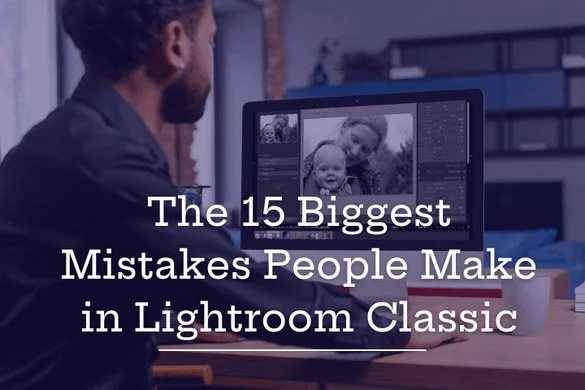The Palisades Fire
/The Tuesday the Palisades Fire started was a typical, beautiful, blue-sky day here in Los Angeles. In the morning, I took a walk to the gym with my son who was home from school for winter vacation. The winds were already blowing quite strongly, and we had to dodge a few palm fronds and other debris falling from trees as we made our way along the sidewalk. There was a general sense of uneasiness as we walked, but nothing could have portended what was to come.
When we got home later, I heard something about a fire in the Palisades, so I turned on the local news to learn more. Reporters were stationed at the base of Palisades Drive at Sunset Boulevard, and it looked like chaos. Smoke rose from the hills in the distance, and people were tumbling down the street with their belongings, sharing stories of impassable roads and having to leave their homes with only what they could carry.
If you’re unfamiliar with the area, the Palisades has many streets that climb up into the hills and ridge lines. It’s often one way in and one way out. If a street is blocked, you’re stuck.
View from our window
The actor Steve Guttenberg suddenly appeared on screen, speaking to a reporter. He urged people not to leave their cars blocking the streets, as it would prevent fire vehicles from reaching the flames to protect homes. He implored people to leave their car keys in the ignition so the vehicles could be moved if necessary. In the end, they had to go up with bulldozers to shove all the vehicles aside to clear the way.
From the beginning of watching that broadcast to an hour or two later, the fire had grown from 10 acres to 200. It was obvious this was only going to get worse as the winds outside were really starting to howl. I walked to the window down the hall and took a picture of the huge plumes of smoke that were billowing out of the area just to the north of us. The winds were so strong they carried the smoke at an alarming speed, the only thing good about it was that it sent the smoke out to sea and not in our direction.
Around that time, our power went out. I wasn’t surprised, but it added to the apocalyptic feeling of the situation. We hunkered down for what we knew would be a long night. Unfortunately, our phones weren’t fully charged, so we had to use them sparingly. I rummaged through the house while there was still some light and found an old combination transistor radio/flashlight we kept around for emergencies. Well here we were.
I lit some candles as the daylight faded and the house darkened. I turned on a local news radio station, realizing this would be our main connection to the outside world. My concern was about the evacuation zones that were being announced and finding a reliable source of information about them.
A colleague told me about an app called Watch Duty, which quickly became my primary source for evacuation updates. This was an app that many people in LA were going to become familiar with in the next few days. Fortunately, we weren’t in the evacuation zone, but we were just a few blocks from an evacuation warning zone, where residents are advised to be ready to leave at a moment’s notice.
I went again down the hall to take a look at the fires. It was night and I could see flames shooting 30 to 40 feet in the air from the not too distant hills. In the dark it was almost impossible to tell how far exactly they were and which way the fire was moving.
You have to understand that normally I wouldn't be concerned as we live in a heavy residential area near Santa Monica, and wildfires tend to spread where there's brush, or fuel as it's called in these situations. I've covered a number of wildfires as a photo journalist and I have seen that sometimes they travel like a slow moving wave, but other times the embers can be carried for a mile or two, especially when the winds are heavy, and they can ignite homes and areas miles away from the main fire.
To say the winds were strong would be an understatement, they were actually hurricane force winds gusting 80 to 90 miles an hour. So it was not at all impossible to think that the embers from the nearby hills could start blowing our way and begin taking out neighborhoods. This had gotten serious and scary, really fast.
So it was time to pack. And that's when it hit me that the things you put in the suitcase or the backpack, or whatever you can load the car with, may be the only tangible things that survive from the life that you’ve known. I had read an article earlier that day about a firefighter who told the reporter that he was going in and saving as many photo albums as he could. It is not a cliche that the thing most people first grab in these situations are the family photos and albums.
As I started to go through my list of my family photos and keepsakes, I realized that over 90% of my photos, both personal and professional, were safely digitized and backed up to a cloud platform. I have thousands of family photos, and I have tens of thousands professional photos, essentially my life's work, and practically all of them were safe. I can't tell you the sense of relief I felt, understanding and knowing this.
I did grab a collection of Kodachrome slides I shot in the 80s that which I am in the process of putting together in a book, and I grabbed some negatives my father took back in the 1940s that I hadn't gotten around to scanning, but other than that, I was good.
I did grab one hard drive, and I grabbed all my cameras. I packed up some clothes as well as some important documents, which, in hindsight I wish I had all in one place instead of having to go looking for them in the file cabinets. Lesson learned on that one. I also should've scanned those documents ahead of time, along with some important letters and papers from my life.
They kept talking on the news about “go bags,” and having them prepared well in advance. We here in Southern California, in addition to wildfires, are always at risk from earthquakes. I won't go into water and food items that should probably be kept at the ready, but this wildfire was teaching me firsthand about things I had been talking to my clients about for years. It had suddenly gotten personal.
The next day, the power came on, which was totally unexpected, as I had believed it would be out for days according to news reports. We were finally able to get firsthand information from news sources, charge our phones, and get up-to-date reports on evacuation zones. We also started to see the truly horrific pictures of the devastation to the Palisades and nearby Malibu.
PCH closed
We kept the car packed up for several days as reports of Santa Ana winds hitting the area were still being forecasted. But when the winds finally abated, we unpacked the car and for the first time in days, felt a sense of normalcy and calm.
The city of Los Angeles will never be the same. The future of many of these communities is uncertain. They keep talking about rebuilding, but realistically, how many people will be able to stay and do that is a serious question. Those of us who survived intact learned some serious lessons about what we can do to be better prepared. But those who were impacted and lost homes and belongings are mourning and trying to find shelter.
I can't imagine how it feels to experience the complete and total loss of everything in one's life. I hope I never have to. I am speaking to my clients, friends, and family about the need to preserve and safeguard the important things in their lives. I try not to sound urgent or even panicky—I don't have to. Everyone here knows and understands the importance of this now; no need for me to explain anything other than how to do it.
I hope all of you are safe.















